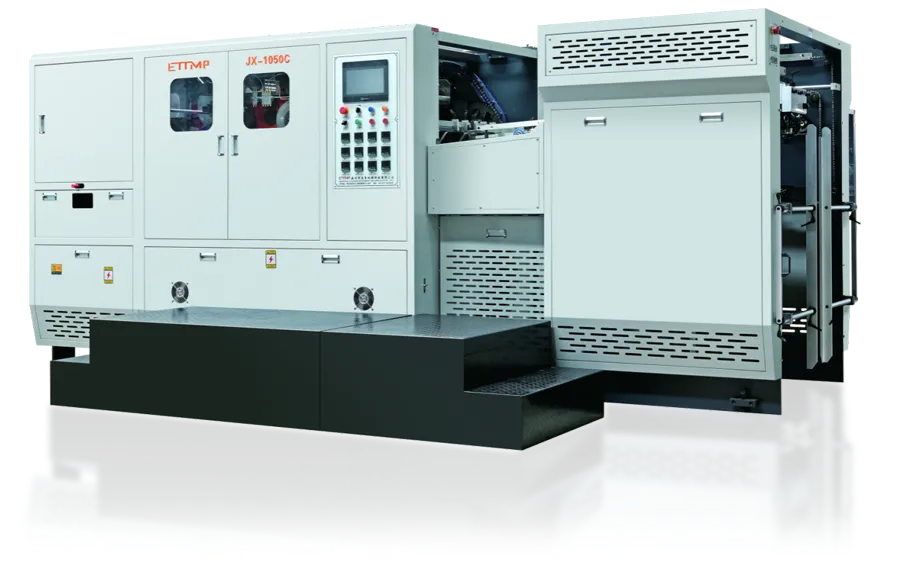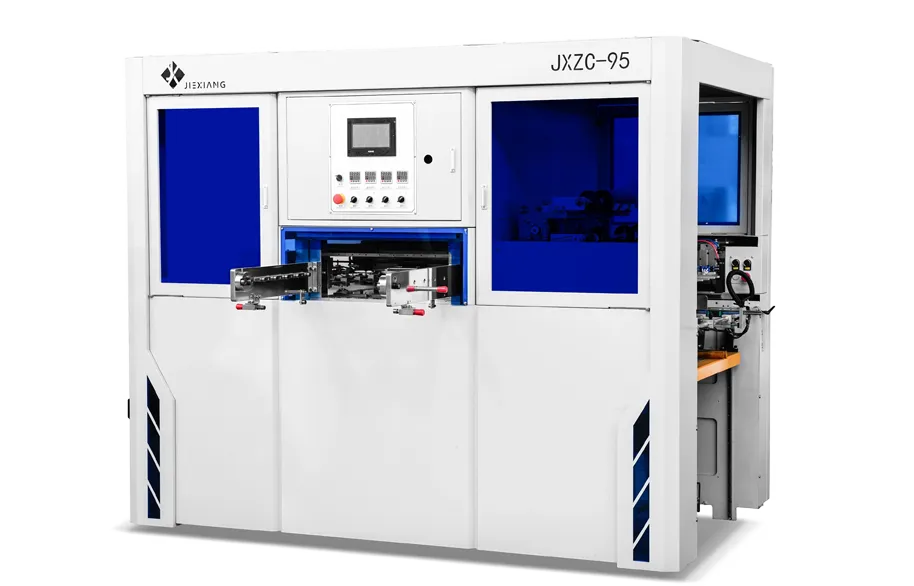Perfect foil stamping outcomes primarily depend on the coordinated balance of temperature, pressure, and stamping speed. Therefore, to achieve flawless foil transfer, pay attention to the following three points.
Temperature
Temperature significantly impacts foil stamping. It must be controlled within the appropriate range to ensure the dye resin layer and adhesive melt sufficiently, guaranteeing optimal transfer of the aluminum layer.
Excessive heat causes over-melting, leading to the surrounding foil melting and peeling off, resulting in smudged impressions. High temperatures can also trigger chemical reactions between the foil's dye resin and aluminum layer, diminishing the product's brightness and metallic sheen, or even causing fogging or bubbling in the imprint. Conversely, insufficient melting due to low temperatures can result in poor adhesion, unstable imprints prone to peeling, or broken lines and mottled patterns.
Pressure
Transferring the aluminum layer requires pressure, which directly affects the adhesion strength of the foil. Even at optimal temperatures, insufficient pressure prevents proper transfer to the substrate, resulting in blurred or smudged impressions. Conversely, excessive pressure causes excessive compression deformation of the backing and substrate, leading to coarse impressions, adhesion issues, or plate smearing. Generally, foil stamping pressure should be set moderately low, guided by the principle of preventing color loss while ensuring good adhesion.
Adjusting foil stamping pressure requires considering multiple factors: substrate properties, stamping temperature, press speed, and the foil material itself. Generally, lower pressure is recommended for sturdy, smooth paper with thick ink layers, higher foil temperatures, and slower printing speeds. Conversely, higher pressure is needed under opposite conditions. Pressure must be uniformly distributed. If localized foiling failures or mottling occur, insufficient pressure at that point is likely. Place a thin sheet of paper on the printing plate at that location to balance the pressure.
The foil backing also significantly affects pressure. Rigid backings produce crisp impressions and are suitable for sturdy, smooth papers like coated paper or glassine. Soft backings yield bolder impressions and are preferable for large foil areas, especially on uneven surfaces or papers with poor flatness, smoothness, or rough textures. Additionally, the foil installation must not be too tight or too loose. Excessive tightness causes missing strokes or breaks in characters, while excessive looseness results in blurred characters and foil smearing.
Speed
Hot stamping speed directly reflects the contact time between the substrate and foil, significantly impacting adhesion strength. Excessively high speeds may cause incomplete transfer or mottled impressions, while excessively low speeds compromise both quality and production efficiency.
During foil stamping, speed, pressure, and temperature interact in a mutually restrictive manner. Process parameters are always determined in the sequence of speed, pressure, and temperature. First, establish the foil stamping speed. Typically, this is treated as a constant and not readily altered. Subsequently, determine the corresponding foil stamping pressure and temperature. This approach simplifies the operating procedure and facilitates control over foil stamping quality.













